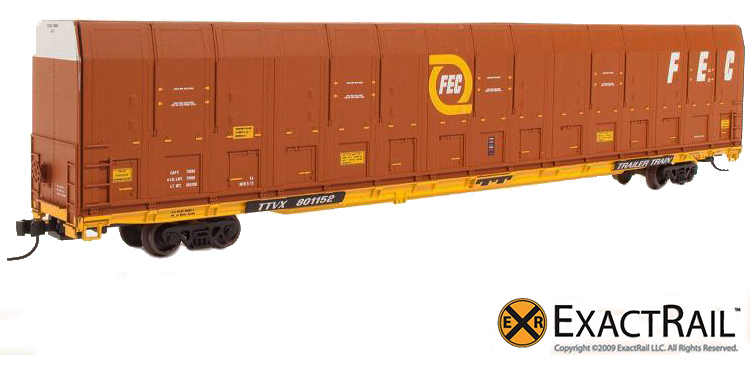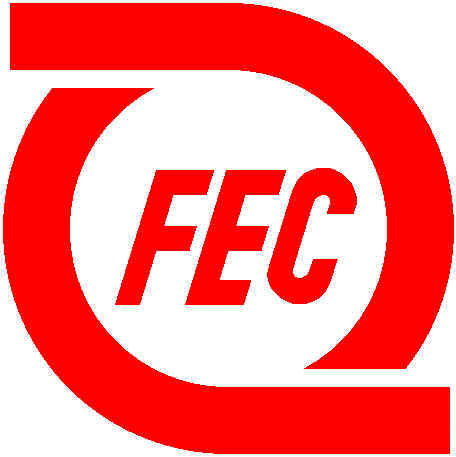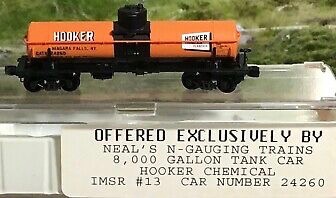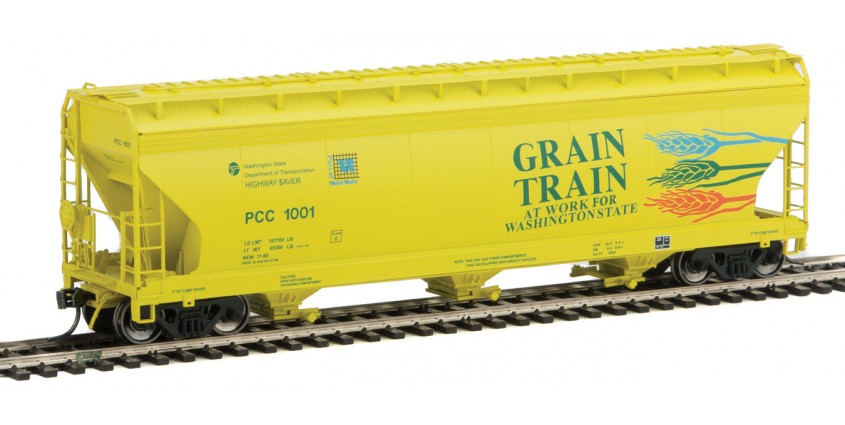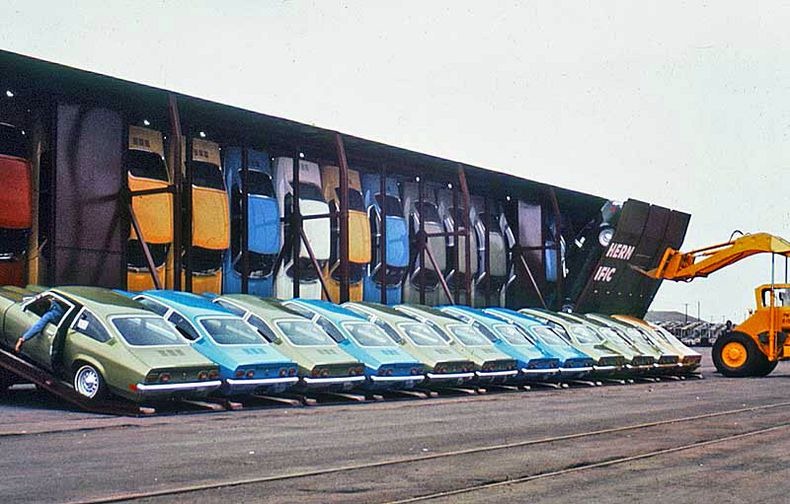ExactRail - EN-50504-1 - Autorack, ACF, Vert-A-Pac - Florida East Coast - 801152
Click to see the details
history
| Stock Number | EN-50504-1 |
| Original Retail Price | $24.95 |
| Brand | ExactRail |
| Body Style | ExactRail Automobile Carrier 89 Foot ACF Vert-A-Pac |
| Image Provider's Website | Link |
| Prototype Vehicle | Autorack, ACF, Vert-A-Pac (Details) |
| Road or Company Name | Florida East Coast (Details) |
| Reporting Marks | TTVX |
| Road or Reporting Number | 801152 |
| Paint Color(s) | Brown and Mustard Yellow with white topped ends |
| Print Color(s) | Black, Blue, Red, White, and Yellow |
| Coupler Type | Generic Magnetic Knuckle |
| Wheel Type | Chemically Blackened Metal |
| Wheel Profile | Small Flange (Low Profile) |
| Release Date | 2009-04-01 |
| Item Category | Rolling Stock (Freight) |
| Model Type | Autorack |
| Model Subtype | Enclosed |
| Model Variety | 89 Foot ACF Vert-A-Pac |
| Prototype Region | North America |
| Prototype Era | NA Era IV: 2nd Gen Diesel (1958 - 1978) |
| Scale | 1/160 |
| Track Gauge | N standard |
Model Information:
ExactRail released this model in April of 2009. There has only been this one release so far (Dec 2016). Fitted with 28" precision CNC machined wheel-sets, these models have been accurately equipped with ExactRail 70 ton low profile Barber trucks.
Prototype History:
Until the early 1960s, automobiles that were moved by rail were carried in boxcars. These were 50 feet long with double-wide doors. Inside were room for four full-sized sedans on a two-tier rack - two raised up off the floor on a steel rack and two others tucked in underneath them. This protected the cars during transport but wasn’t very efficient has the weight of four vehicles was far less than the maximum weight a boxcar that size could carry. When 85-foot and 89-foot flatcars came into service, it was possible to pack a total of fifteen automobiles in one car on tri-level auto racks. But it still didn’t exceed the maximum allowable weight for each flatcar.
When Chevrolet started designing ‘Vega’ during the 1970s, one of the main objectives was to keep the cost of the car down around $2,000 in circa-1970 dollars. At the time, the freight charge for moving a loaded railroad car from the Lordstown assembly plant to the Pacific coast - the longest distance that cars produced at Lordstown would need to travel - was around $4,800. Since the Vega was a subcompact, it was possible to squeeze three more cars on a railroad car for a total of eighteen, instead of the usual fifteen. But that still worked out to around $300 per car – a substantial surcharge for a $2000 car. If only Chevrolet could get more Vegas on a railroad car, the cost per unit of hauling them would go down.
The engineers at GM and the Southern Pacific Railroad came up with a clever solution. Instead of loading the cars horizontally, the Vegas will be placed vertically on a specially designed auto-rack – the Vert-A-Pac. Within the same volume of an 89-foot car, the Vert-A-Pac could hold as many as 30 automobiles instead of 18.
Chevrolet's goal was to deliver Vegas topped with fluids and ready to drive to the dealership. In order to be able to travel nose-down without leaking fluids all over the railroad, Vega engineers had to design a special engine oil baffle to prevent oil from entering the No. 1 cylinder, batteries had filler caps located high up on the rear edge of the case to prevent acid spilling, the carburetor float bowl had a special tube that drained gasoline into the vapor canister during shipment, and the windshield washer bottle stood at a 45 degree angle. Plastic spacers were wedged in beside the powertrain to prevent damage to engine and transmission mounts. The wedges were removed when cars were unloaded.
The Vega was hugely popular when it was introduced in 1970 however it quickly earned a reputation for unreliability, rust, safety issues and lousy engine durability. When the Vega was discontinued, the Vert-A-Pac cars had to be retired as they were too specialized to be used with anything else. The Vert-A-Pac racks were scrapped, and the underlying flatcars went on to other uses.
When Chevrolet started designing ‘Vega’ during the 1970s, one of the main objectives was to keep the cost of the car down around $2,000 in circa-1970 dollars. At the time, the freight charge for moving a loaded railroad car from the Lordstown assembly plant to the Pacific coast - the longest distance that cars produced at Lordstown would need to travel - was around $4,800. Since the Vega was a subcompact, it was possible to squeeze three more cars on a railroad car for a total of eighteen, instead of the usual fifteen. But that still worked out to around $300 per car – a substantial surcharge for a $2000 car. If only Chevrolet could get more Vegas on a railroad car, the cost per unit of hauling them would go down.
The engineers at GM and the Southern Pacific Railroad came up with a clever solution. Instead of loading the cars horizontally, the Vegas will be placed vertically on a specially designed auto-rack – the Vert-A-Pac. Within the same volume of an 89-foot car, the Vert-A-Pac could hold as many as 30 automobiles instead of 18.
Chevrolet's goal was to deliver Vegas topped with fluids and ready to drive to the dealership. In order to be able to travel nose-down without leaking fluids all over the railroad, Vega engineers had to design a special engine oil baffle to prevent oil from entering the No. 1 cylinder, batteries had filler caps located high up on the rear edge of the case to prevent acid spilling, the carburetor float bowl had a special tube that drained gasoline into the vapor canister during shipment, and the windshield washer bottle stood at a 45 degree angle. Plastic spacers were wedged in beside the powertrain to prevent damage to engine and transmission mounts. The wedges were removed when cars were unloaded.
The Vega was hugely popular when it was introduced in 1970 however it quickly earned a reputation for unreliability, rust, safety issues and lousy engine durability. When the Vega was discontinued, the Vert-A-Pac cars had to be retired as they were too specialized to be used with anything else. The Vert-A-Pac racks were scrapped, and the underlying flatcars went on to other uses.
Road Name History:
The Florida East Coast Railway (reporting mark FEC) is a Class II railroad operating in the U.S. state of Florida and since 2007 has been a subsidiary of Railroad Acquisition Holdings, LLC, itself a subsidiary of Fortress Investment Group, LLC.
The FEC was historically a Class I railroad owned by Florida East Coast Industries (FECI) from 2000-2006, FOXX Holdings from 1983-2000, and the St. Joseph Paper Company prior to 1983.
Built primarily in the last quarter of the 19th century and the first decade of the 20th century, the FEC was a project of Standard Oil principal Henry Morrison Flagler. Flagler originally visited Florida to aid with the health issues faced by his first wife, Mary. A key strategist who worked closely with John D. Rockefeller building the Standard Oil Trust, Henry Flagler noted both a lack of services and great potential during his stay at St. Augustine. He subsequently began what amounted to his second career developing resorts, industries, and communities all along Florida's shores abutting the Atlantic Ocean.
The FEC is possibly best known for building the railroad to Key West, completed in 1912. When the FEC's line from the mainland to Key West was heavily damaged by the Labor Day Hurricane of 1935, the State of Florida purchased the remaining right-of-way and bridges south of Dade County, and they were rebuilt into road bridges for vehicle traffic and became known as the Overseas Highway. However, a greater and lasting Flagler legacy was the developments along Florida's eastern coast.
During the Great Depression, control was purchased by heirs of the du Pont family. After 30 years of fragile financial condition, the FEC, under leadership of a new president, Ed Ball, took on the labor unions. Ball claimed the company could not afford the same costs as larger Class 1 railroads and needed to invest saved funds in its infrastructure, fast becoming a safety issue. Using replacement workers, the company and some of its employees engaged in one of the longest and more violent labor conflicts of the 20th century from 1963 until 1977. Ultimately, federal authorities had to intervene to stop the violence, which included bombings, shootings and vandalism. However, the courts ruled in the FEC's favor with regard to the right to employ strikebreakers. During this time, Ball invested heavily in numerous steps to improve its physical plant, installed various forms of automation,was the first US Railroad to operate two man train crews, eliminate cabooses and end all of its passenger services (which were unprofitable) by 1968.
In modern times, the company's primary rail revenues come from its intermodal and rock trains. Since 2007, it has been owned by Fortress Investment Group,[citation needed] which acquired it for over US$3 billion (including non-rail assets). Fortress previously owned conglomerate short line railroad operator RailAmerica, which for a time operated FEC but the two companies never merged; Fortress no longer owns RailAmerica and RailAmerica no longer operates FEC. A former CSX official, James Hertwig, was named as President and Chief Executive Officer of the company effective July 1, 2010.
From Wikipedia
The FEC was historically a Class I railroad owned by Florida East Coast Industries (FECI) from 2000-2006, FOXX Holdings from 1983-2000, and the St. Joseph Paper Company prior to 1983.
Built primarily in the last quarter of the 19th century and the first decade of the 20th century, the FEC was a project of Standard Oil principal Henry Morrison Flagler. Flagler originally visited Florida to aid with the health issues faced by his first wife, Mary. A key strategist who worked closely with John D. Rockefeller building the Standard Oil Trust, Henry Flagler noted both a lack of services and great potential during his stay at St. Augustine. He subsequently began what amounted to his second career developing resorts, industries, and communities all along Florida's shores abutting the Atlantic Ocean.
The FEC is possibly best known for building the railroad to Key West, completed in 1912. When the FEC's line from the mainland to Key West was heavily damaged by the Labor Day Hurricane of 1935, the State of Florida purchased the remaining right-of-way and bridges south of Dade County, and they were rebuilt into road bridges for vehicle traffic and became known as the Overseas Highway. However, a greater and lasting Flagler legacy was the developments along Florida's eastern coast.
During the Great Depression, control was purchased by heirs of the du Pont family. After 30 years of fragile financial condition, the FEC, under leadership of a new president, Ed Ball, took on the labor unions. Ball claimed the company could not afford the same costs as larger Class 1 railroads and needed to invest saved funds in its infrastructure, fast becoming a safety issue. Using replacement workers, the company and some of its employees engaged in one of the longest and more violent labor conflicts of the 20th century from 1963 until 1977. Ultimately, federal authorities had to intervene to stop the violence, which included bombings, shootings and vandalism. However, the courts ruled in the FEC's favor with regard to the right to employ strikebreakers. During this time, Ball invested heavily in numerous steps to improve its physical plant, installed various forms of automation,was the first US Railroad to operate two man train crews, eliminate cabooses and end all of its passenger services (which were unprofitable) by 1968.
In modern times, the company's primary rail revenues come from its intermodal and rock trains. Since 2007, it has been owned by Fortress Investment Group,[citation needed] which acquired it for over US$3 billion (including non-rail assets). Fortress previously owned conglomerate short line railroad operator RailAmerica, which for a time operated FEC but the two companies never merged; Fortress no longer owns RailAmerica and RailAmerica no longer operates FEC. A former CSX official, James Hertwig, was named as President and Chief Executive Officer of the company effective July 1, 2010.
From Wikipedia
Brand/Importer Information:
Dedicated to creating replicas that continue to define standards for precision and authenticity, through its unique expertise in mold creation and product design, Provo, Utah based ExactRail has produced some of the industry's most acclaimed models; true benchmarks for quality over the last decade.
With the N-Scale Series, ExactRail offers precision micro-tooled replicas in 1:160 scale. Each model features fine-scale detail, expert hand-assembly and the finest finish-work in the industry. ExactRail's N-scale Series offers enthusiasts innovative small scale replicas with unprecedented quality and design.
With the N-Scale Series, ExactRail offers precision micro-tooled replicas in 1:160 scale. Each model features fine-scale detail, expert hand-assembly and the finest finish-work in the industry. ExactRail's N-scale Series offers enthusiasts innovative small scale replicas with unprecedented quality and design.
Item created by: nscalemodeler160
on 2016-08-24 04:04:39
Last edited by: gdm on 2021-01-31 06:54:15
If you see errors or missing data in this entry, please feel free to log in and edit it. Anyone with a Gmail account can log in instantly.
Last edited by: gdm on 2021-01-31 06:54:15
If you see errors or missing data in this entry, please feel free to log in and edit it. Anyone with a Gmail account can log in instantly.


